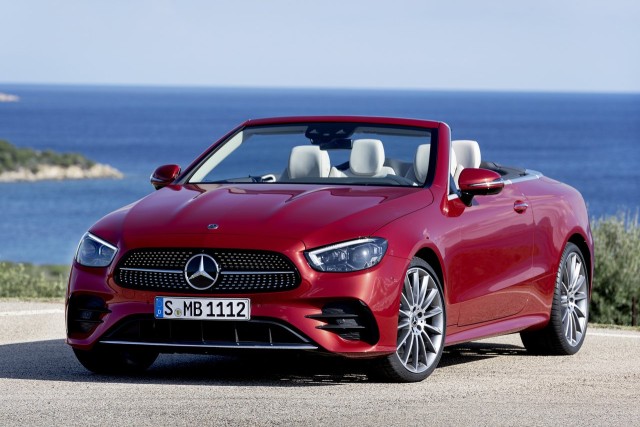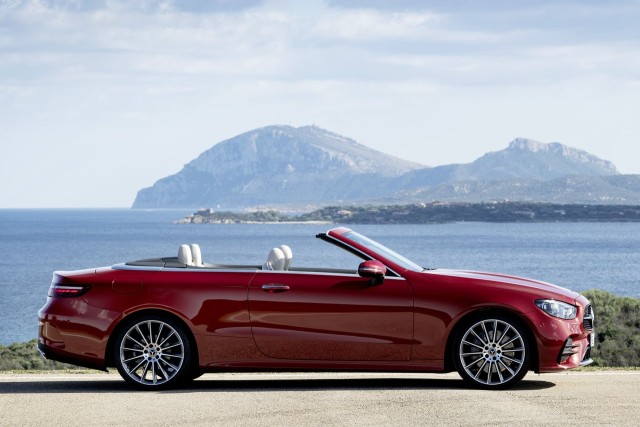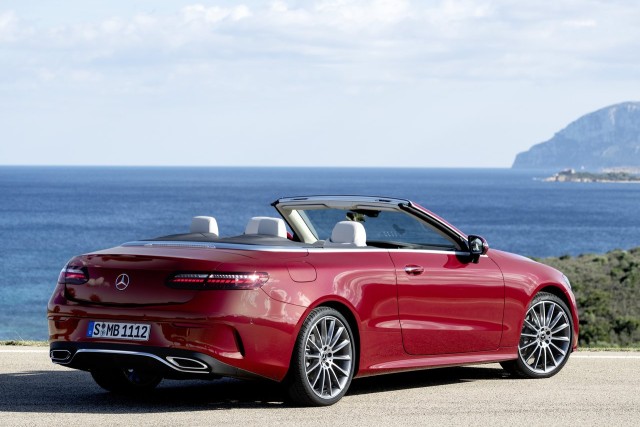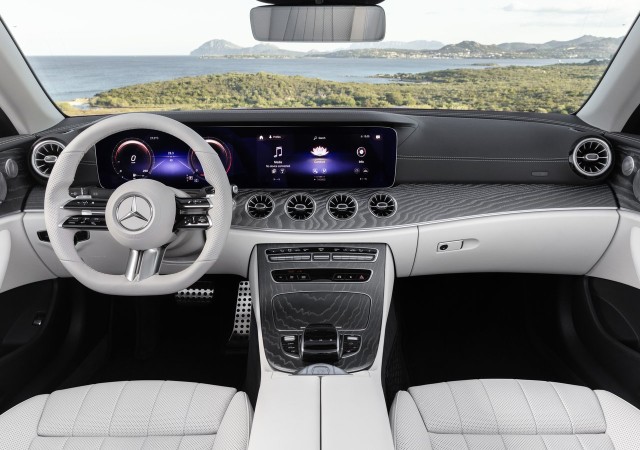The new Mercedes E-Class Cabriolet and its Coupé counterpart have been revealed and they have introduced a new mild-hybrid diesel powertrain.

The updated E-Class Cabriolet has been revealed and it looks spectacular as ever but one hidden gem in the line-up comprising four- and six-cylinder engines is an evolved turbo-diesel that now packs a 48-volt mild-hybrid system as well.
With all major premium German carmakers moving to mild-hybrid and plug-in hybrid powertrains for their model lines to improve efficiency and lower emission, there have been a number of launches as updated models surface. The new BMW 5 Series was recently introduced with all but one engine choice being electrified. Audi, too, adopt mild-hybrid tech on their new models, of which we’ve already driven the A6 45 TFSI and the A8 L 55 TFSI quattro in India.

The new Mercedes-Benz E-Class Cabriolet and Coupé are offered with an updated OM 654 M diesel engine. There have been several significant changes to the motor we’ve experienced in the new E 220 d L in India.
Firstly, is the measure aimed at further improving efficiency is the new 48-volt integrated starter-generator (ISG). Along with electrification, which also includes the use of an electric refrigerant compressor for the air-conditioning system, there have been a number of important modifications. These include a new crankshaft that actually increases piston stroke to 94 mm, up from 92.3 mm earlier, taking effective displacement up to 1,993 cc from the earlier 1,950 cc. This engine will power future evolved models lines as well.
Secondly, the injection pressure has been increased to 2,700 bar from the already high previous 2,500 bar. This, together with the two water-cooled turbochargers, both with variable turbine geometry, makes for particularly fast response times and steady power delivery. A sodium-filled cooling duct in each of the steel pistons helps dissipate temperature peaks in the piston recess. The new 1,993-cc in the new E-Class Cabriolet is rated at 195 kW, or 265 hp – as much as the old 350 d V6! The ‘300 d’ spec engine, which we’ve tested in the CLS 300 d last year in India, has 245 hp and 500 Nm. Although torque output hasn’t been specified for this new engine, we can safely assume that it will be 500 Nm or even more. Whether it will wear E 300 d or E 320 d badging remains to be seen.
Thirdly, the integrated motor, called the EQ Boost system, as seen in earlier models as well, provides an additional 15 kW (20 hp) and 180 Nm of torque assist for a short duration whenever needed. A compact 48-volt battery pack, DC-DC converter and control electronics ensure the 12-volt system and 48-volt mild hybrid work well in tandem.
Finally, there’s the multi-stage exhaust gas after-treatment for this most powerful of the four-cylinder diesel engines. Taking things further are a close-coupled NOx storage catalytic converter for reducing emissions of oxides of nitrogen, a diesel particulate filter with special coating for further reducing the amount of oxides of nitrogen, and the now familiar SCR (selective catalytic reduction) that uses metered injected quantities of AdBlue urea compound as well as an additional SCR catalyst in the underbody of the vehicle with its own separate metered and injected AdBlue solution.
If you thought that was all, the 9G-Tronic automatic transmission has also been further developed to accommodate the second-generation ISG and is being used, for the first time, with the four-cylinder ISG engine. The electric motor, the power electronics and the transmission cooler have now moved into or onto the transmission. Previously required cables are now eliminated, offering both space and weight advantages, making it easy to combine the transmission with the different combustion engines. In addition, the efficiency of the transmission has also been increased, by optimized interplay with the electric auxiliary oil pump, fully-integrated transmission control with a multi-core processor for increased computing power, a reduction in the number of electric interfaces, and an overall transmission control weight reduction of 30 per cent.

The line-up of diesel engines is completed by the OM 656 in-line six-cylinder unit, displacing 2,925 cc. It is also available for the two-door models in conjunction with the 4MATIC all-wheel drive system.
Also read: Mercedes-Benz E 220 d L Road Test Review
Also read: Mercedes-Benz CLS 300 d Road Test Review
Also read: Mercedes-Benz C 200 Drive Review




















Leave a Reply